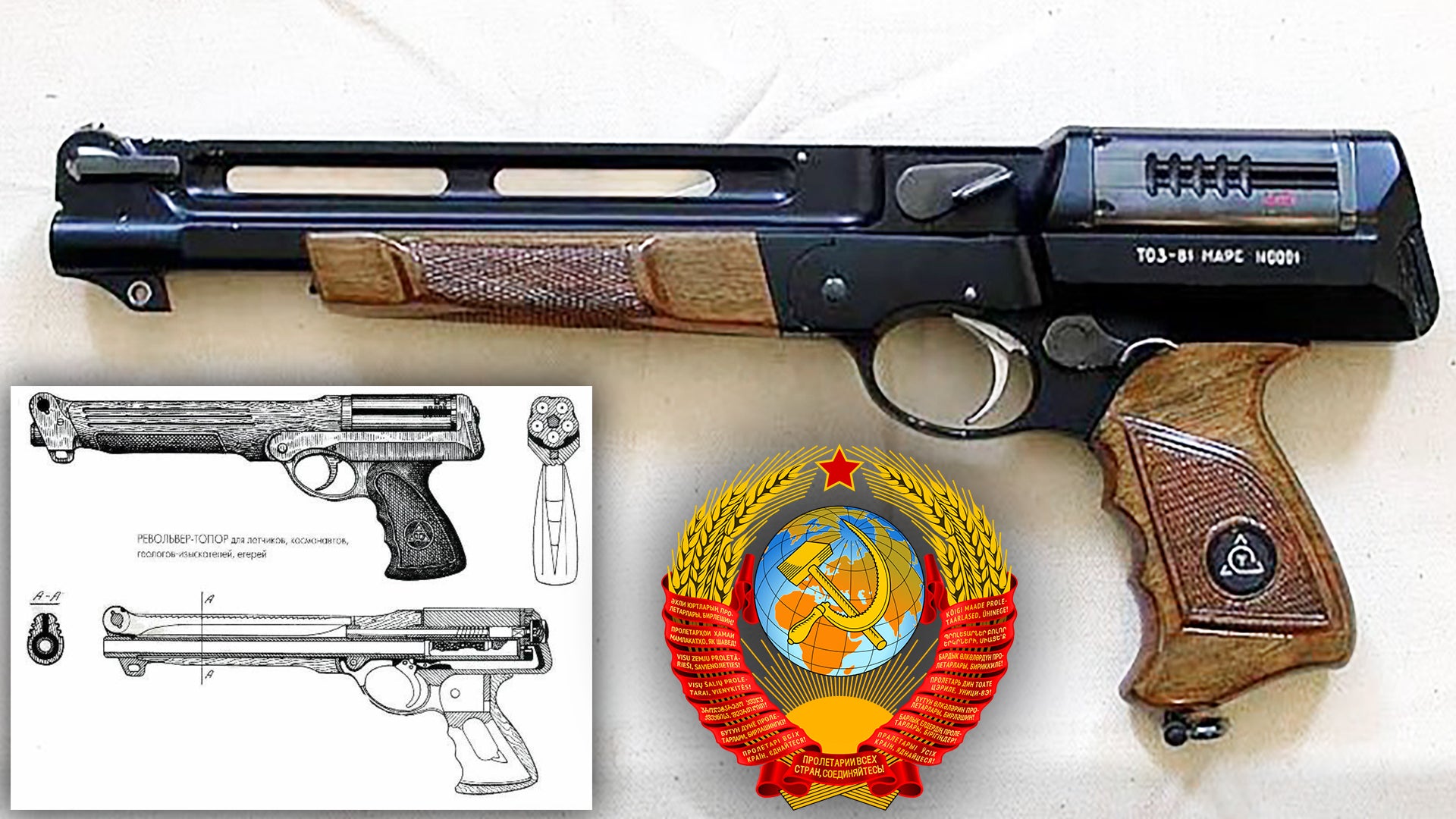Weapons designers of the Cold War were responsible for so many frankly bizarre creations that it’s sometimes hard to tell the difference between fact and fiction. Among the designs that were actually very real were the handguns developed as survival weapons for Soviet cosmonauts, which look like they could’ve been ripped right from a period science fiction film or James Bond movie.
These fascinating weapons reflect the harsh environments that cosmonauts were expected to work in, not only in orbit but also once they had returned to Earth. These Soviet space guns weren’t intended for dueling American astronauts in a Cold War space battle, but for defense against bears and other wild animals — perhaps even tigers — once they landed back on terra firma.
While guns have never been carried aboard U.S. spacecraft, the development of specialist weapons to arm cosmonauts apparently began in 1979 on the advice of Alexei Leonov — the first person to complete a spacewalk. At the end of Leonov’s landmark Voskhod 2 spacewalk mission in 1965, the capsule containing him and Pavel Belyayev drifted way off course and landed in the desolate, snow-covered forests of Russia’s Urals region.

At around the time of the Voskhod 2 mission, a cosmonaut could expect to find the following in their survival kit:
• Makarov pistol and ammunition
• wrist compass
• 18 waterproof matches with striker
• machete; fishing kit
• strobe light with spare battery
• eight fire starters
• folding knife
• antenna
• three pairs of wool gloves
• signal mirror
• NAZ-7M type medical kit
• penlight
• R-855-YM or R-855-A1 radio
• two Priboy-2S radio batteries
• three wool balaclava hoods
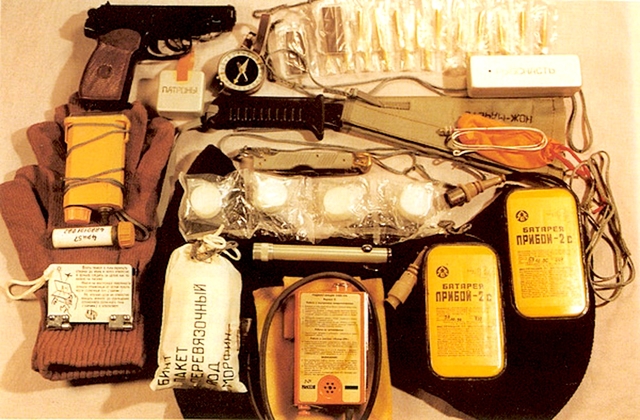
As the flight controllers raced to find the lost cosmonauts, Leonov and Belyayev were well aware that they would have to spend the night alone in the taiga, the domain of bears and wolves. Although they were provided with a Makarov PM service pistol and ammunition, the experience reportedly drove Leonov to advocate for the issue of a purpose-designed cosmonaut survival pistol in the future.
The development of more appropriate survival weapons began in 1981 and examples of at least two were actually built. Unlike the Makarov, chambered for 9x18mm ammunition, which was wholly unsuitable for stopping a large animal like a bear, the new weapons would offer a good deal more firepower.
TP-82
From the famous Tula factory, best known for producing the Kalashnikov series of rifles, came the TP-82, also known as the TOZ-82. This was a triple-barrel space shotgun that was a regular fixture of Soviet and Russian space missions from 1982, issued as a part of the Nosimyi Avariynyi Zapas, NAZ, or Soyuz Portable Survival Kit. Reportedly, the gun was also provided to some Soviet Air Force units, presumably for aircrews operating over particularly inhospitable regions.
Optimized from the start for cosmonaut use, the TP-82 looked like an oversized pistol, but was actually an innovative “convertible” shotgun — or, more accurately, a double-barrel shotgun mated to a short-barrel rifle. Of the three barrels, the upper two were smoothbore and chambered for 12.5x70mm ammunition. The lower, rifled barrel fired 5.45x39mm ammunition, the same round used in the then-Soviet standard AK-74 assault rifle.
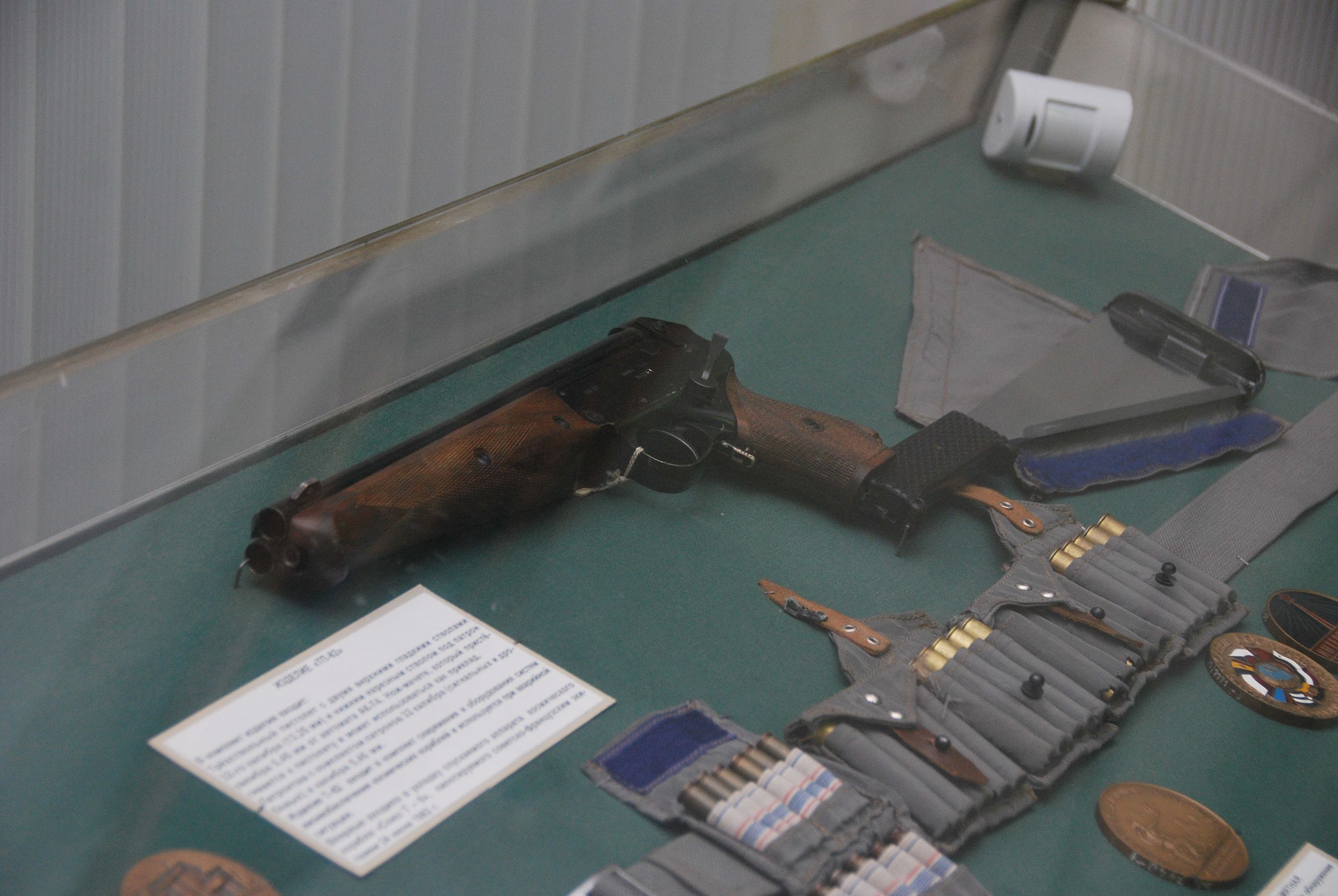
Three types of ammunition were provided. There were 12.5mm buckshot shells for hunting game and red signal flare cartridges to use with the larger barrels. 5.45mm rounds with soft-point bullets that were intended to bring down dangerous wild animals were also included.
In addition, the gun had a detachable buttstock, to help make it easier to stow in Soviet space capsules. There was also a sharp blade hidden within the stock that could be used as a machete to cut through undergrowth or as an axe to chop wood for fire or shelter.

American space journalist and historian James Oberg provides some interesting accounts from Western astronauts who had experiences of training with the TOZ-81 as part of the space survival courses after the fall of the Soviet Union. These drills included firing practice from a boat in the Black Sea.
“It was amazing how many wine, beer, and vodka bottles the crew of the ship could come up with for us to shoot at,” astronaut James Voss told Oberg. “It [the TP-82] was very accurate. We threw the bottles as far as possible, probably 20 or 30 meters, then shot them. It was trivial to hit the bottles with the shotgun shells, and relatively easy to hit them with the rifle bullets on the first shot.”
Oberg recalls another astronaut, David Wolf, who spent time onboard Russia’s Mir space station in 1997-98, describing the weapon as “a wonderful gun.” Wolf added: “I found it to be well-balanced, highly accurate, and convenient to use.”
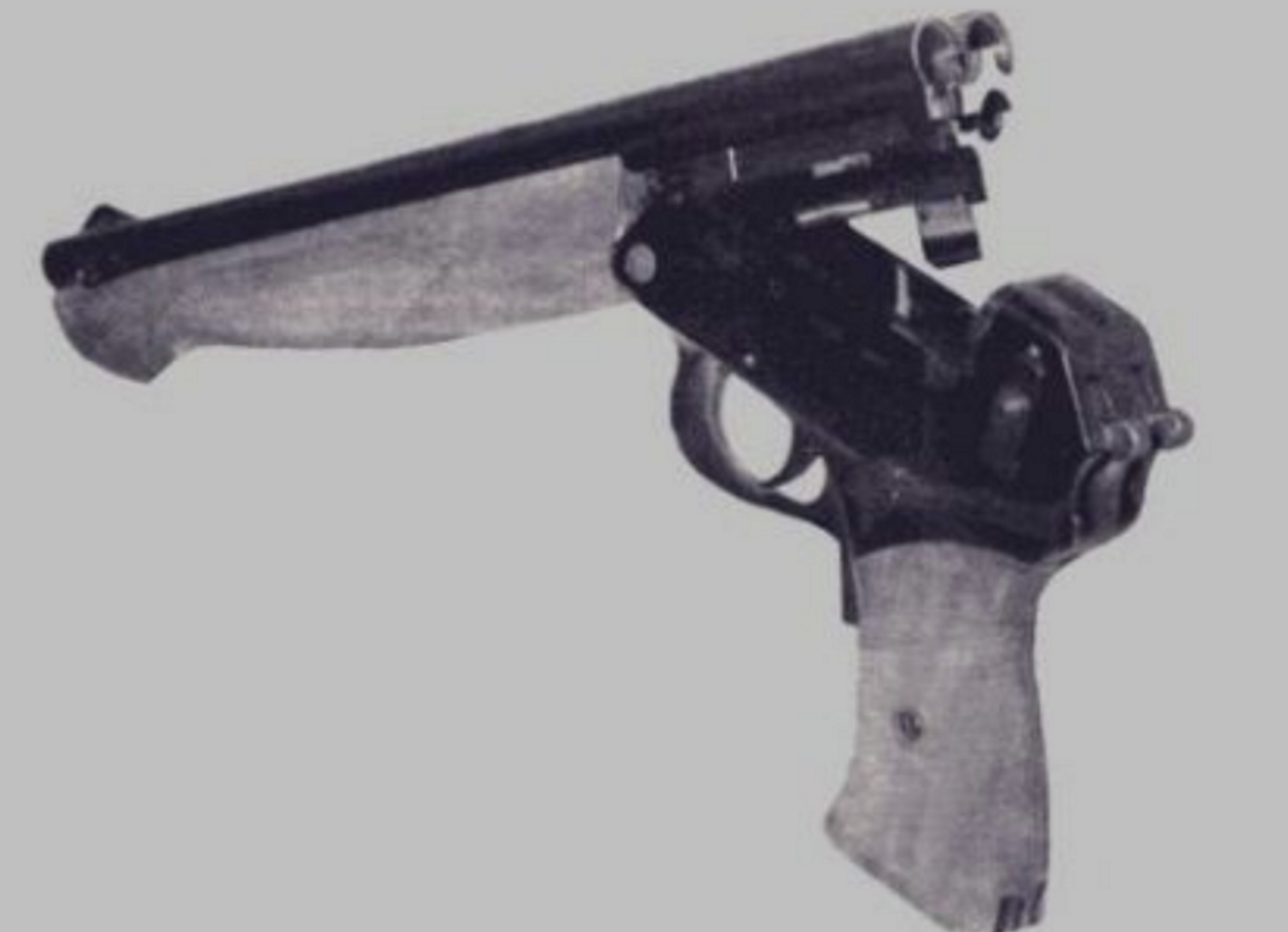
TOZ-81 Mars
A rival to the TP-82 was the TOZ-81 — appropriately named Mars — a space revolver that didn’t make it into large-scale production. Similarly emerging from the small arms factory at Tula, it seems only one example of this weapon was ever completed for use in trials.

Exactly why the TOZ-81 revolver was rejected in favor of the TP-82 is unclear, but it might have been down to the additional complexity of the design, or perhaps the less-popular .410-bore chambering. The TOZ-81 featured a five-shot cylinder and the trigger mechanism was double-action-only.
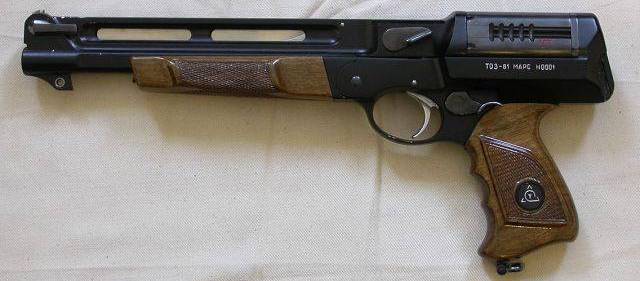
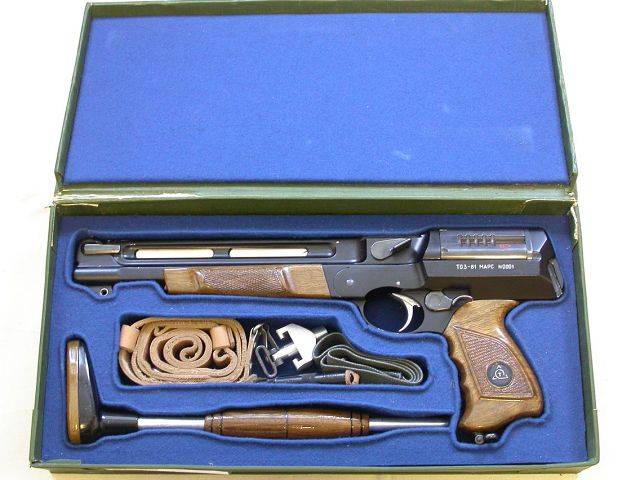
Unusually, the cylinder was located above the grip, with the gun firing from the bottom chamber. In typical revolvers, the cylinder is further forward and the top chamber in the top position is the one that gets fired with every shot. A different configuration seems to have been selected for the Mars to reduce the overall length of the weapon (useful for space capsule stowage), lower the bore-axis, and to improve balance for accuracy.
Two types of barrels were ultimately provided with the gun and these could be changed manually. There was a rifled barrel for use with 5.45x39mm ammunition and a smoothbore .410-bore one that could be loaded with cartridges filled with buckshot or a single dart-like flechette.
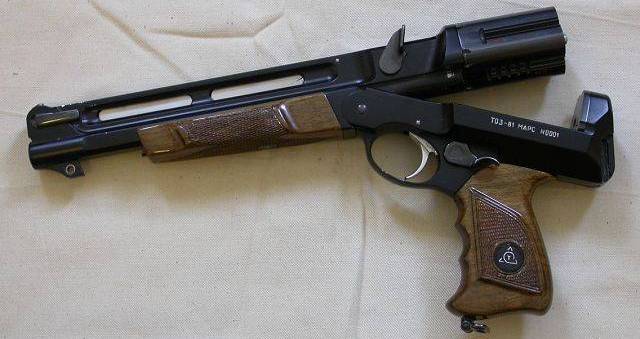
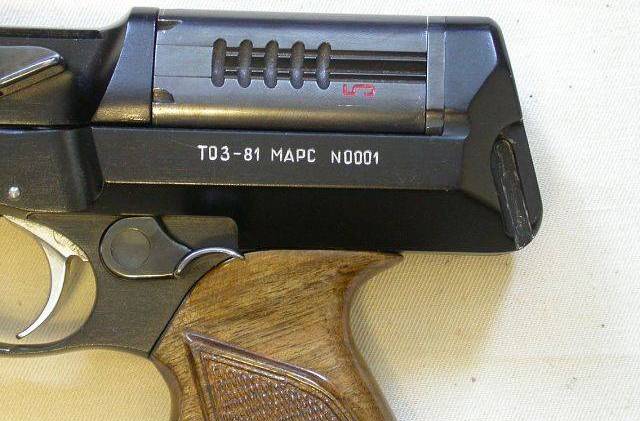
As with the TP-82, a folding knife was also incorporated in the TOZ-81, with it being housed over the barrel. In addition, a compact radio transmitter with a folding antenna was built into the detachable aluminum stock.


What happened to Russia’s space guns?
While the TOZ-81 design was destined to be discarded, the TP-82 “space shotgun” provided space crews with a survival weapon into the early 21st century, by which time American and civilian astronauts had trained to use it for missions in Soyuz spacecraft headed to and from the International Space Station (ISS). The TP-82 seems to have been used until 2007 when it was announced that the remaining ammunition stocks had become unusable and the weapon was withdrawn.
In its place, a standard pistol of unconfirmed type is again available to include in Russian space travelers’ survival kits.
However, it seems not all cosmonauts, or foreign spacefarers who travel in Russian space capsules during international missions, choose to take guns with them. It’s unclear why. The Russians do have significantly improved capabilities to tell where spacecraft, even ones flying off course, will come down today than they did 40 years ago.
In October 2007, it was reported that cosmonaut Yuri Malenchenko launched into space aboard a Soyuz capsule armed with a “simple pistol” rather than the bespoke TP-82. Flying with him, U.S. astronaut Peggy Whitson took a traditional Kazakh horse-whip. This was symbolic of her commander’s role and not to keep wild animals at bay.
The issue of weapons in space — even if they are ultimately intended to defend against bears on Earth — is a controversial one. James Oberg wrote in 2014 that for years he was “needling and teasing the Russians about the presence of the guns while they were campaigning for no other weapons in space.”
According to Oberg, writing in 2014, a traditional gun remains on the Russian space agency’s official list of personal kit, but crews make a vote before each mission and choose to remove it. That, at least, suggests that those flying aboard Russian spacecraft reserve the option to take a firearm with them.
While a standard pistol might not be a bear-stopping weapon like the TP-82, its presence might just make the difference in the most extreme survival situations. On the other hand, it certainly lacks the science-fiction-like looks and features of the Soviet-era space guns.
Hat Tip to the fantastic @Sovietvisuals, make sure to follow them here.
Contact the author: thomas@thedrive.com
